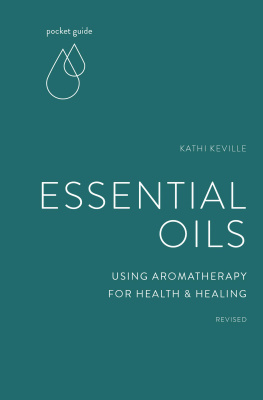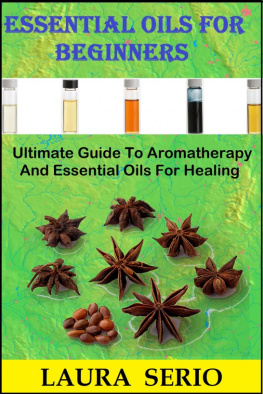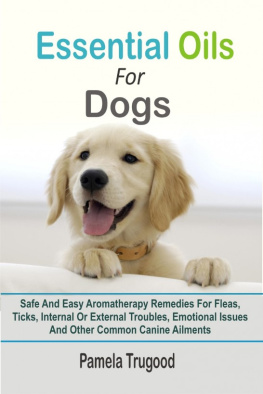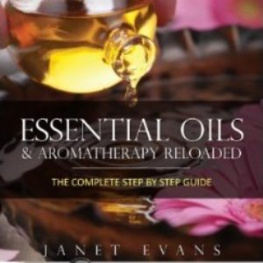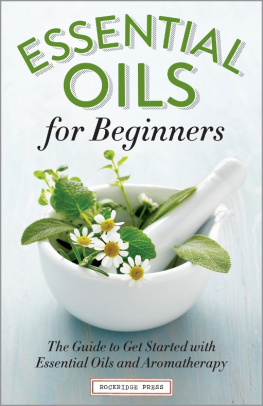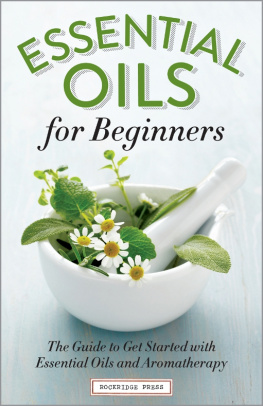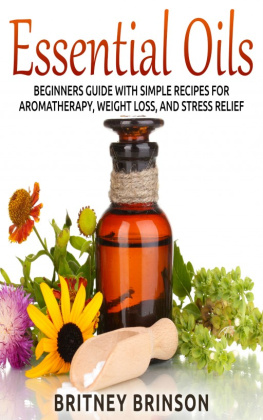Absolute: This essential oil is extracted with a chemical solvent, which is then removed, leaving a pure essential oil. The process involves no heat, so it is used on plants like jasmine whose fragrance is destroyed by steam distillations high heat. It can also be used to produce some expensive essential oils that can be distilled, such as rose. Some absolutes are so solid that they need to be warmed and thinned with alcohol. Some aromatherapists avoid using absolutes due to the toxicity of the solvent, even though it is removed to leave the pure essential oil.
Carbon dioxide extraction: CO extraction uses high pressure without the high heat of distillation to create essential oils that usually carry a more complete fragrance that better matches the plant from which they originated. It is an expensive process that may become less so as demand for CO-extracted oils increases.
Carrier : Essential oils, to be used safely, almost always require dilution in some form of carrier, such as vegetable oil or alcohol.
Chemotype: This designates a plant that has a slightly different chemistry than others in the same species. They not only have a different fragrance, but their properties change along with the percentage of different compounds. These genetic variations typically occur when a plant grows in a different environment. Aromatherapists will seek out a certain chemotype because it is higher in a particular medicinal constituent.
Concrete: This is produced when a chemical solvent is used to dissolve the essential oils, as well as pigments and waxes, from a plant. The solvent is then removed through evaporation under pressure, leaving a sticky, soft wax that contains the essential oil.
Couperose skin: This sensitive type of skin that usually appears on the face is reddened and may show enlarged blood vessels. It is treated with gentle skin products.
Diffuser: This is a glass or ceramic apparatus that pumps a consistent fine mist of unheated fragrance to scent the air. It operates on an electric pumpfind one that operates quietly. Thick oils such as vetiver, sandalwood, vanilla, myrrh need to be diluted with thinner essential oils with alcohol so they do not clog your diffuser. If it does get clogged, or if you want to get rid of a permeating scent, pour rubbing alcohol through it, then let the alcohol completely evaporate.
Distillation: Steam distillation extracts essential oils by passing steam through the plant matter to release the oil. The oil-laden steam is then forced into an enclosed condensation tube surrounded by a cold-water bath. The cold turns the steam back into water, separating out the oil.
Enfleurage: In this old method of extracting essential oils, the plant is placed on thin, warm layers of animal fat, which absorb the oil. Once the fat is saturated with fragrance, the oil is separated out. Rarely seen today, enfleurage was used for plants that are unable to withstand distillations intense heat and have flowers that continue to produce essential oil after being picked, such as jasmine and tuberose.
Fixative: Most oils deteriorate with age, but fixative oils actually improve. They make the fragrance last in perfume and potpourri. Some fixative oils are clary sage, patchouli, sandalwood, vetiver, benzoin, frankincense, and myrrh.
Fixed oil: Vegetable oils are called fixed because their molecules are too large to escape naturally from the plant when it is heated or rubbed, as essential oils do. They are also not easily absorbed into the skin. Most vegetable oils are extracted by a combination of heat and pressure, although some, such as olive oil, can be cold pressed.
Fragrant or aromatherapy water: These waters are produced by adding essential oils to distilled water, generally ten to twelve drops per ounce. Due to their water content, they are moisturizing and hydrating. They are less effective, but also less expensive and easier to make, than hydrosols (see below) because you do not need a distiller to produce them. Spray or splash on a fragrant water after your shower, to cool down on a hot day, or to freshen your face.
GABA: Gamma-aminobutyric acid (GABA) is an amino acid that acts as a neurotransmitter to relax the nervous system and help regulate sleep, anxiety, and chronic pain by blocking impulses between nerve cells in the brain. Some essential oils promote GABA in the brain.
Herbal infusion: This is a fancy name for herb tea. When boiling water is poured over a fragrant herb to steep it, the essential oils extract into the water. Another type of herbal infusion submerges chopped, fragrant plants in warm vegetable oil to extract their oils. The essential oils migrate into the warm oil and the spent herbs are strained out.
Hydrosol: Steam distillation usually picks up the most water-soluble parts of essential oil. The oil is separated out, leaving this aromatic water, called a hydrosol. The hydrophilic compounds left in the water are good hydrating moisturizers for the complexion. Use them for facial sprays and room spritzers and to replace the water in aromatherapy formulas. They can also be used in foods and drinks safely. Turkish delight and the Indian lassi drink both contain the rose water hydrosol.
Volatile oil: Essential oils are also called volatile oils because they quickly evaporate into the air and dissipate.
The following chart will help you through the maze of measurements used in aromatherapy. It will guide you to finding the proper measurements when you convert formulas. Most books indicate formulas by the drop, but some use teaspoons or milliliters instead. The chart will also help you make price comparisons when you buy essential oils from different sources. This can get confusing because they are sold by the ounce, dram, or milliliter. The most common dilution for aromatherapy formulas is a 2 percent dilution, or twelve drops of essential oil per ounce of carrier (vegetable oil, alcohol, or water).
Approximate Measurement Conversion Chart |
12.5 drops | tsp. | 1 oz. | dram | mL |
25 drops | tsp. | 1 oz. | dram | 1 mL |
100 drops | 1 tsp. | 1 oz. | 1 drams | 5 mL |
150 drops | 1 tsp. | oz. | 2 drams | 7.4 mL |
3 tsp. | 1 tbsp. | oz. | 4 drams | 15 mL |
24 tsp. | 8 tbsp. | 4 oz. | 32 drams | 118 mL |
48 tsp. | 16 tbsp. | 8 oz. | 64 drams | L |
96 tsp. | 32 tbsp. | 16 oz. | 128 drams | L |
Educational Seminars and Products
American College of Healthcare Sciences
Dorene Petersen
PO Box 57
Lake Oswego, OR 97034
www.achs.edu
Correspondence course; seminars
American Herb Association
Kathi Keville

